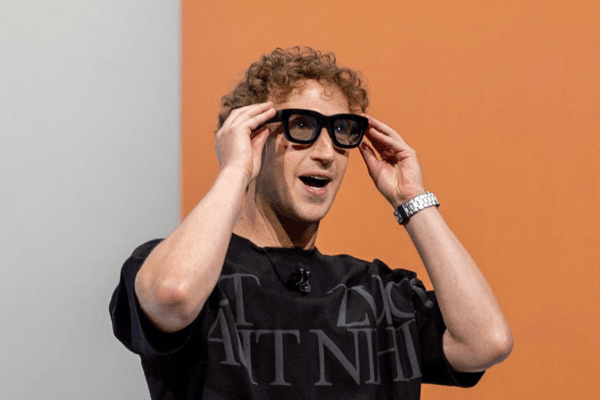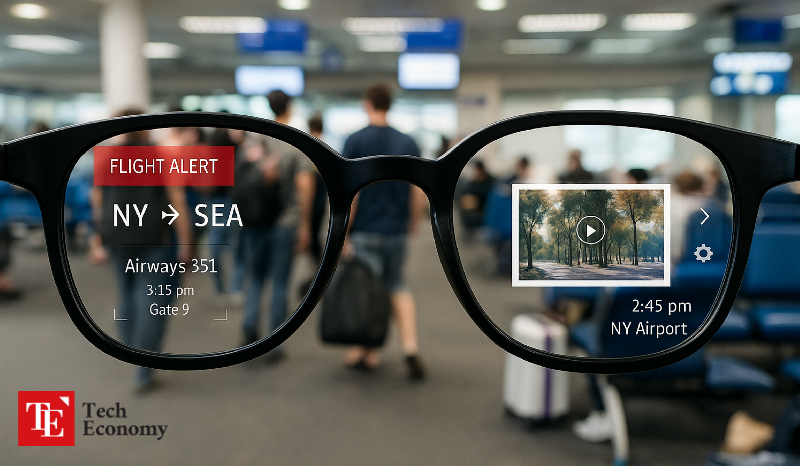“Smart Glasses as the Next Frontier Beyond Smartphones” Global Tech Titans Enter the Fray
Input
Modified
Meta betting on display, Google and Samsung on XR Big Tech accelerating differentiated strategies in smart glasses Chinese tech giants joining the race with payment and content integration

Global technology companies are increasingly identifying smart glasses as the next-generation device to succeed smartphones, reinvigorating a once-stagnant market. With Meta consistently rolling out new products and Chinese tech firms such as Alibaba joining the competition, smart glasses appear poised to enter a full-fledged phase of mass adoption.
Meta’s ‘Hypernova’ to be unveiled next month, low-price strategy at play
According to Bloomberg on the 20th (local time), Meta’s next-generation smart glasses, known as “Hypernova,” will be unveiled at the company’s annual product launch event “Connect” next month. Hypernova integrates an AI voice assistant and a built-in display capable of delivering augmented reality (AR) experiences. Information can be displayed on the right lens, with control executed through a wristband. Unlike the current Ray-Ban smart glasses, the new generation incorporates an embedded display.
The new smart glasses will be priced starting at $800. This represents a substantial reduction from the previously expected threshold of over $1,000, and is less than half the price of Apple’s competing “Vision Pro,” which retails at $3,499. Bloomberg noted that “Meta has deliberately sacrificed margins to stimulate demand,” adding, “This is a common tactic employed at new product launches.”
Last September, Meta introduced its next-generation extended reality (XR) glasses, “Orion,” designed as a complete replacement for smartphones and developed to challenge Apple. Hypernova is positioned as a test model, with failure potentially jeopardizing Orion’s release. Particularly, the production cost of Orion prototypes stands at $10,000 per unit, making cost reduction an urgent priority.
Meta has designated smart glasses as the future revenue driver for Meta AI, building out a lineup that spans Ray-Ban smart glasses, the goggle-type “Supernova2,” and Hypernova. At the core lies the AI voice assistant. Meta’s recently established Superintelligence Lab (MSL) has commenced development of the latest version of its large multimodal model (LMM), “Llama,” to be integrated into these devices.

Alibaba and Xiaomi entering the market
Alibaba recently made its debut in the smart glasses sector. At the World Artificial Intelligence Conference in Shanghai on the 5th, the company unveiled the “Quark AI Glass,” powered by its proprietary large language model “Qwen” and AI assistant “Quark.” The device offers music streaming, real-time translation, meeting transcription, navigation, and payment functions. By leveraging a combination of pricing, services, and AI integration, Alibaba aims to differentiate itself and extend its reach beyond the domestic market to the global stage. Xiaomi followed suit in June, unveiling the lightweight “Xiaomi AI Glass,” weighing 40 grams, equipped with a 12-megapixel ultra-wide camera and the AI assistant “XiaoAI.”
After Google’s failed foray in 2013, U.S. Big Tech firms had largely abandoned smart glasses, but they are now revisiting the opportunity. Ming-Chi Kuo, an analyst at TF International, projected that Apple would ship between 3 million and 5 million units of its first Apple Glass in the second quarter of 2027. Google, meanwhile, acquired a 4% stake in the South Korean eyewear brand Gentle Monster this June, signaling renewed interest in reentering the market.
Samsung has also joined forces with Google under “Project Moohan” to develop XR-based smart glasses. A prototype was unveiled at Google’s developer conference in May, with global fashion brands such as Gentle Monster also participating as partners. A Samsung Electronics official commented, “The prototype revealed was still an early-stage concept, far from commercialization. The launch timeline has not been set, and development has only just begun.”
Remaining challenges: advancing quality and expanding ecosystems
The competition over smart glasses is increasingly seen as a battle to define computing supremacy in the post-smartphone era. Meta CEO Mark Zuckerberg, introducing Orion last year, declared, “This will be the next computing device after smartphones,” adding, “All previous AR efforts have been headsets, goggles, or helmets, but smart glasses will be the device that defines the next era.”
Google also unveiled its Android-based “Android XR” operating system at the end of last year, signaling ambitions to expand its platform, while Samsung is leveraging its strengths in hardware, display, and mobile ecosystems. Chinese tech firms, meanwhile, are broadening the market with low-cost strategies while deepening integration with AI, payments, and content platforms.
An IT industry source observed, “Smart glasses will secure design competitiveness through collaborations with fashion brands and will segment the market with a two-tier strategy spanning affordable to high-performance models. The decisive factor will be how seamlessly augmented reality experiences can be delivered through AI services.” The source added, “Hardware maturity has already reached an inflection point. The challenge now lies in pushing performance further and expanding the supporting application ecosystem.”





















